Removing Conifer Trees: A Professional Arborist’s Guide

As experienced arborists serving Essex and surrounding areas, we frequently encounter the need to remove conifer trees. These evergreen trees, including species like pine, spruce, fir, and cypress, are popular in many landscapes but can sometimes outgrow their space or cause other issues. In this comprehensive guide, we’ll explore the reasons for conifer removal, the intricate process involved, and crucial considerations to keep in mind.
Why Remove a Conifer Tree?
Before delving into the removal process, it’s essential to understand the reasons why a conifer might need to be removed:
- Overgrowth: Conifers can grow extremely tall and wide, sometimes outgrowing their intended space.
- Light obstruction: Dense conifer growth can block sunlight from gardens or solar panels.
- Root issues: Extensive root systems can interfere with foundations, pavements, or utilities.
- Disease or pest infestation: Conifers can be affected by diseases and pests, like pine wilt or bark beetles.
- Storm damage: Severe weather can cause irreparable damage to conifer trees.
- Aesthetic changes: Sometimes, conifers are removed as part of landscape redesign.
- Nuisance factors: Conifers can drop needles, cones, and sap, which some property owners find problematic.
The Removal Process
Removing a conifer tree requires careful planning and execution. Here’s an overview of our professional approach:
1. Thorough Assessment
We begin with a comprehensive site and tree assessment, considering:
- The conifer species, size, age, and health status
- Surrounding structures, vegetation, and wildlife
- Access for equipment and personnel
- Potential hazards (e.g., power lines, uneven terrain)
- Presence of nesting birds or other wildlife
2. Legal Considerations
Before any work begins, we ensure all legal requirements are met:
- Check if the tree is protected by a Tree Preservation Order (TPO)
- Verify if it’s in a Conservation Area
- Obtain necessary permits from local authorities
- Ensure compliance with wildlife protection laws
3. Detailed Planning
Based on the assessment, we develop a comprehensive removal plan:
- Determine the felling direction or dismantling strategy
- Identify equipment needs
- Plan for traffic management if necessary
- Develop a strategy for wood and needle disposal
4. Rigorous Safety Measures
Safety is paramount in conifer removal due to their height and unpredictable behavior:
- Establish a generous safety perimeter
- Ensure team members wear appropriate protective equipment
- Conduct a detailed pre-work safety briefing
- Have a certified first aider on site
5. Specialized Removal Techniques
The specific technique used depends on the conifer’s size, species, and location:
Straight Felling: Traditional techniques for open areas:
- Creating a precise felling notch
- Making a calculated back cut
- Using felling wedges
Sectional Dismantling: For confined spaces, remove in sections:
- Climbing or using a mobile platform
- Carefully cutting branches and trunk sections
- Using rigging systems to lower pieces
Crane Assisted Removal: For very tall conifers:
- Calculate piece weights
- Coordinate between crane operator and arborist
- Plan lift paths carefully
6. Stump Management
After the tree is down, we address the stump:
- Stump grinding is the most common method
- Complete removal may use specialized equipment
- In some cases, chemical treatment prevents regrowth
7. Thorough Site Clean-up
We ensure the site is left clean and safe:
- Remove all debris
- Chip branches for mulch
- Process larger sections into firewood
- Rake and level the area
Special Considerations for Conifer Trees
Species-specific factors include:
- Height requiring specialized techniques
- Sap that gums up equipment
- Dense branches complicating dismantling
- Soft wood prone to splitting
- Root system variations
- Wildlife habitats
- Needle clean-up challenges
After Removal: Next Steps
Options after conifer removal:
- Replanting: Maintain evergreen presence with suitable species.
- Landscaping: Redesign the space after removal.
- Soil Amendment: Adjust soil acidity from conifer needles.
- Mulch Utilization: Use chipped material for acid-loving plants.
When to Call a Professional
Professional removal is recommended for:
- Uncertainty about safety or legal requirements
- Trees showing signs of disease or structural weakness
- Conifers over 20 feet tall
- Trees near structures or power lines
As professional arborists, we have the experience, specialised equipment, and insurance to handle conifer removals safely and efficiently. We ensure all work is carried out in compliance with local regulations and with respect for the surrounding environment.
Remember, while conifer removal is sometimes necessary, it should be approached with careful consideration due to the trees’ environmental benefits and potential wildlife habitats. If you’re concerned about a conifer on your property, contact us for a professional assessment. We may be able to suggest pruning or management strategies that could address your concerns without full removal.
By choosing a professional arborist service, you ensure that your conifer tree removal is conducted safely, efficiently, and with the least possible impact on your property and the local ecosystem. Our expertise not only guarantees a job well done but also provides peace of mind in knowing that all legal and environmental considerations have been properly addressed.<br>
